
Chi Cygni is a Mira variable star in the constellation Cygnus, and also an S-type star. It is around 500 light years away.
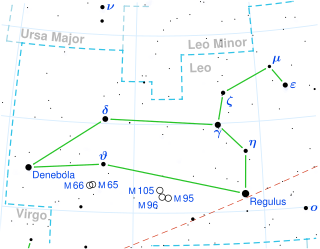
R Leonis is a red giant Mira-type variable star located approximately 370 light years away in the constellation Leo.

10 Aquilae is a star in the equatorial constellation of Aquila. 10 Aquilae is the Flamsteed designation. It has an apparent visual magnitude of 5.9 and thus is a faint star that is just visible to the naked eye in dark skies. The brightness of this star is diminished by 0.17 in visual magnitude from extinction caused by interstellar gas and dust. Based on an annual parallax shift of 13.45 mas, the distance to this star is around 240 light-years.

R Andromedae is a Mira-type variable star in the constellation Andromeda. Its spectral class is type S because it shows absorption bands of zirconium monoxide (ZrO) in its spectrum. It was among the stars found by Paul Merrill to show absorption lines of the unstable element technetium, establishing that nucleosynthesis must be occurring in stars. The SH molecule was found for the first time outside earth in the atmosphere of this star. The star is losing mass due to stellar winds at a rate of 1.09×10−6M☉/yr.

V Aquilae is a carbon star and semiregular variable star in the constellation Aquila. It has an apparent magnitude which varies between 6.6 and 8.4 and is located around 400 parsecs (1,300 ly) away.
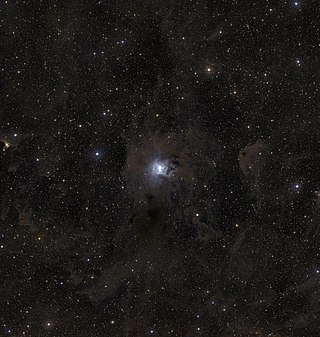
T Cephei is a Mira variable star in the constellation Cepheus. Located approximately 600 light-years distant, it varies between magnitudes 5.2 and 11.3 over a period of around 388 days.

V1401 Aquilae is a single, semi-regular pulsating star in the equatorial constellation of Aquila. It has the designation HD 190390 from the Henry Draper Catalogue, and was formerly designated 64 Sagittarii. The evolutionary status of the star is unclear, and it has been classified as a post-AGB object, a UU Herculis variable, or belonging to the W Virginis variable subclass of the type II Cepheids. It is dimly visible to the naked eye with an apparent visual magnitude that fluctuates around 6.38. Based on parallax measurements, it is located at a distance of approximately 2,380 light years. It lies 21.5° from the galactic plane.
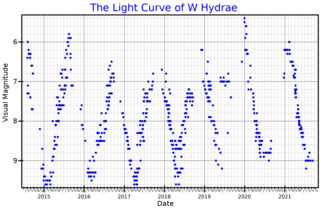
W Hydrae is a Mira-type variable star in the constellation Hydra. The star is nearly located within the Solar neighborhood, between 75 and 120 parsecs, likely at 320 light years from the Sun. It has a visual apparent magnitude range of 5.6 to 10. In the near-infrared J band it has a magnitude of -1.7, is the 7th brightest star in the night sky, and is even brighter than Sirius.
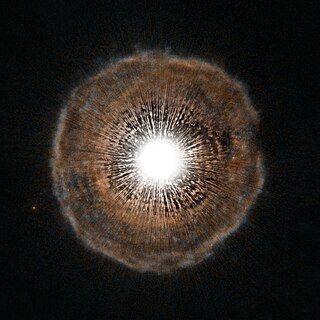
U Camelopardalis is a semiregular variable star in the constellation Camelopardalis. Based on parallax measurements made by the Hipparcos spacecraft, it is located about 3,000 light-years away from the Earth. Its apparent visual magnitude is about 8, which is dim enough that it cannot be seen with the unaided eye.
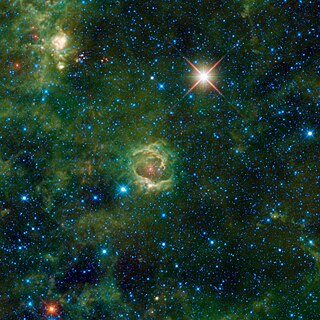
PZ Cassiopeiae is a red supergiant star located in the constellation of Cassiopeia, and a semi-regular variable star.

Y Centauri or Y Cen is a semiregular variable star in the constellation of Centaurus.

R Geminorum is a Mira variable and technetium star in the constellation Gemini. It is located approximately 850 parsecs (2,800 ly) away.

π1 Gruis (Pi1 Gruis) is a semiregular variable star in the constellation Grus around 530 light-years from Earth. It forms a close naked-eye double with π2 Gru four arc-minutes away.

S Cassiopeiae is a Mira variable and S-type star in the constellation Cassiopeia. It is an unusually cool star, rapidly losing mass and surrounded by dense gas and dust producing masers.

IRAS 08544−4431 is a binary system surrounded by a dusty ring in the constellation of Vela. The system contains an RV Tauri variable star and a more massive but much less luminous companion.

II Lupi is a Mira variable and carbon star located in the constellation Lupus. It is the brightest carbon star in the southern hemisphere at 12 μm.
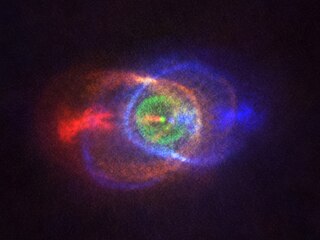
HD 101584 is a suspected post-common envelope binary about 1,800 to 5,900 light-years distant in the constellation of Centaurus. The system is bright at optical wavelengths with an apparent visual magnitude of about 7. The primary is either a post-AGB star, but more likely a post-RGB star. The secondary is a red dwarf or possibly a low-luminosity white dwarf, which orbits the primary every 150-200 days. The system is surrounded by a slowly rotating circumbinary disk, probably with a face-on orientation towards the solar system and a size of about 150 astronomical units.
V669 Cassiopeiae or V669 Cas is an OH/IR star, a type of particularly cool red giant, with a spectral type of M9III.

RT Virginis is a variable star in the equatorial constellation of Virgo, abbreviated RT Vir. It ranges in brightness from an apparent visual magnitude of 7.7 down to 9.7, which is too faint to be visible to the naked eye. Based on parallax measurements made with the VLBI, the distance to this star is approximately 740 light years. It is receding from the Sun with a radial velocity of 17 km/s.
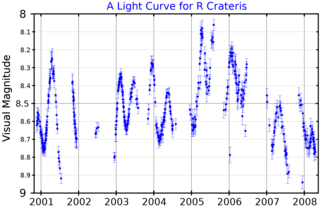
R Crateris is a star about 700 light years from the Earth in the constellation Crater. It is a semiregular variable star, ranging in brightness from magnitude 8.1 to 9.5 over a period of about 160 days. It is not visible to the naked-eye, but can be seen with a small telescope, or binoculars. R Crateris is a double star; the variable star and its magnitude 9.9 F8V companion are separated by 65.4 arcseconds.



















